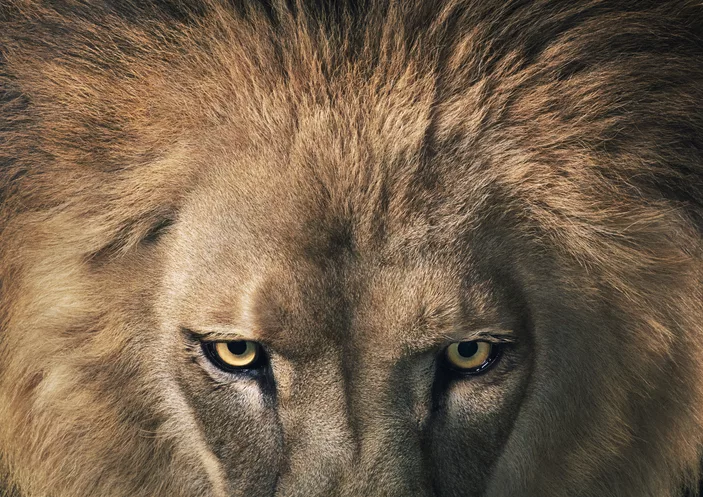[ad_1]
Disclaimer: The following article contains stories of animal violence and measures that may be interpreted as animal cruelty. The views are not that of the author, but merely a re-telling of a historical event.
Tsavo, a region in Kenya, harbours a haunting history of two male lions that became notorious man-eaters, preying on and consuming over 100 people. This tragic tally of human deaths stands as the highest ever recorded caused by lions. These fearsome creatures are known as Tsavo’s man-eating lions.

Picture: Getty Images
In the vast and untamed Tsavo region of Kenya, back in 1898, a railway bridge over the Tsavo River was under construction to connect Uganda with the Indian Ocean at Kilindini Harbour. Lieutenant-Colonel John Henry Patterson, a British soldier, hunter, and author, was tasked with overseeing the project.
Before Patterson’s arrival, disturbing rumours of “killer lions” circulated among the workers. Soon after he reached the site, reports of missing workers began to arrive at his desk. Initially, he took no action, dismissing the rumours as mere hearsay. However, as days passed, more workers disappeared, and the rumours turned out to be a horrifying reality. Two maneless male lions were prowling the construction workers’ campsite at night, snatching people from their tents while they slept.
After a period of calm following the first incidents in March, the Tsavo lions returned a few months later with even greater ferocity. Despite the workers’ efforts to deter the lions with campfires and thorn fences, the attacks persisted, occurring every night. Patterson meticulously documented these harrowing events, later publishing them in his book, “The Man-eaters of Tsavo” (1907). Over time, the lions grew bolder, attacking together and each claiming a victim.
The escalating attacks caused panic among the workers, leading to an exodus from Tsavo and a halt in bridge construction. British colonial support dispatched 20 armed men to hunt down and eliminate the man-eaters, setting traps and ambushing the lions from trees.
On December 9, 1898, Patterson managed to wound one of the lions in its hind leg. Though it escaped initially, it returned to the camp that evening, stalking Patterson as he hunted it down. Patterson shot the lion again, and the following morning, the lion was found dead not far from the camp. It measured an impressive 2.95 meters from nose to tail.
Twenty days later, on December 29, the second lion was found and shot six times over the next 11 days. Patterson claimed the lion died while gnawing on a fallen tree branch, still attempting to reach him.
The exact number of victims claimed by the Tsavo lions remains unverified, but Patterson stated in his book that they devoured 135 people, including 28 “Indian coolies” (Indian indentured labourers), with many unfortunate African natives whose records were never officially documented.
Following the lions’ demise, construction workers returned, completing the bridge in February 1899. The incident created a major stir in both Kenya and the United Kingdom, even prompting a discussion in Parliament by the UK Prime Minister at the time, Lord Salisbury.
Patterson preserved the bodies of the two maneless lions as rugs in his home until 1925 when he sold them to Chicago’s Field Museum. The museum’s taxidermy experts restored the lions and turned them into impressive exhibits displayed to this day.
X-ray imaging revealed that both lions suffered from dental issues, with one having a severe root-tip abscess in a canine tooth. Researchers believe that these dental problems led the lions to turn to humans as easier prey.
In the years that followed, the Field Museum acquired another man-eating lion from Mfuwe, Zambia, which had killed and consumed six people in 1991. This specimen also found its place in the museum’s display.
The story of the Tsavo man-eating lions has inspired numerous accounts, including Colonel Patterson’s and later Bruce Patterson’s writings. Additionally, several films, such as “The Ghost and the Darkness,” have drawn from this incredible and tragic tale.
As for the reasons behind the lions’ sudden turn to human prey, Bruce Patterson posits several possibilities in his book “The Lions of Tsavo: Exploring the Legacy of Africa’s Notorious Man-Eaters”:
- An outbreak of cattle plague in 1898 left the lions with a scarcity of food, forcing them to seek alternative sources, including humans.
- The lions might have acquired a taste for humans after feeding on dead bodies found in the Tsavo River region.
- The Hindus working on the railway practised cremations for their dead, possibly attracting the lions to scavenge for remains.
- The severe dental disease may have compelled the lions to target humans as easier prey to catch and chew.
[ad_2]
Source link
Jarastyle – #story #Tsavos #ManEating #Lions
Courtesy : https://www.getaway.co.za/travel-stories/the-story-of-tsavos-man-eating-lions/

